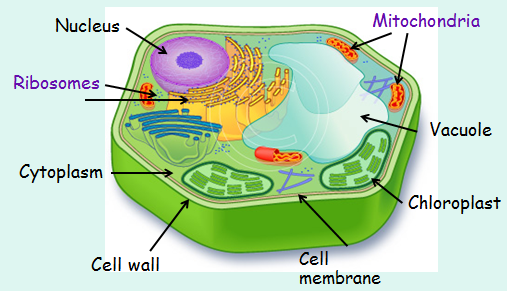Cell Membrane – Its outermost covering of a plant cell. Made of cellulose which is a hard material. It supports the cell and gives it shape. That is why a plant body is so hard. An animal cell does not have a cell wall. It has a soft cell membrane. That is why an animal’s body is not so hard.
what is cell membrane
Structure of a plant cell prominent parts of plant cells are as follows:
1.Cell Wall
It is the outermost covering of an animal cell. In-plant cells are present next to the cell wall. It has many tiny holes in it. By these tiny holes, it controls the movement of materials in and out of the cell.
2.Cytoplasm
Its a jelly-like material. It is present inside the cell membrane. It has water and other chemical substances. Many cell organelles (tiny cell structures) are present in it. Most of the cell functions take place in it.
3.Nucleus
It is the most important part of a cell. It is called the control Centre of the cell because it controls all the activities of the cell. A thin membrane surrounds it which is called nuclear membrane. It also has many threads like structures called chromosomes. These chromosomes carry the genes that determine sex and the characteristics of an organism inherits from its parents. Chromosomes pass on information to new cells. The number of chromosomes is fixed in every cell. A human cell has 46 chromosomes. If we remove a cell’s nucleus it would not grow or develop. It would die.
Cell Membrane Structure
iii. Write a note on the nucleus of a cell?
Nucleus: It is the most important part of a cell. It is called the control Centre of the cell because it controls all the activities of the cell. A thin membrane surrounds it which is called nuclear membrane. It also has many thread-like structures called chromosomes. These chromosomes carry the genes that determine sex and the characteristics of an organism inherits from its parents. Chromosomes pass on information to new cells. The number of chromosomes is fixed in every cell. A human cell has 46 chromosomes. If we remove a cell’s nucleus it would not grow or develop. It would die.
Write about the shoot system of a plant.?
Shoot system: The shoot system of a plant consists of a main stem, leaves, branches and flowers. This system performs many functions such as the movement of water, food making and producing seeds, etc.
Define a cell, a tissue, an organ, an organ system and an organism?
Cell: A cell is a structural and functional unit of a living thing or an organism.
Tissue:
A group of cells that perform the same function is called a tissue. Multicellular organisms (plants and animals) have different tissues in their bodies.
Organ:
A complete and independent part of a plant or animal that has a specific function is called an organ. An organ is made of different tissues which work together. An organ performs one or more than one functions. Our body is made of a number of different organs such as the heart, lungs, eyes, brain, etc.
Organ System:
A group of organs which work together is called an organ system. Different organ systems do different functions.
Organism:
An individual living thing that can carry on the activities of life by means of organs is called an ‘organism’. An organism may either be unicellular (single-celled) like bacteria or it may be multicellular (many-celled) like a man.
You Might Also Like:
- What is Microscope Describe the Parts And Function
- Google Ads How To Make It Complete Guided Step-by-Step
